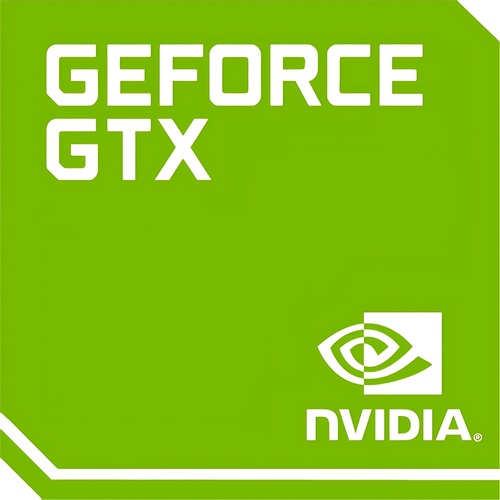NVIDIA GeForce GTX 1650 Laptop vs NVIDIA GeForce GTX 1060 Max-Q
NVIDIA GeForce GTX 1650 Laptop
NVIDIA GeForce GTX 1060 Max-Q
|
1024 Shaders
2GB GDDR6
1560MHz
|
1280 Shaders
6GB GDDR5
1480MHz
|
|
Peak AI Performance
6.39 TFLOPS
FP16
|
Peak AI Performance
15.16 TOPS
INT8
|
|
FP32
3.2 TFLOPS
|
FP32
3.79 TFLOPS
|
|
FP16
6.39 TFLOPS
|
FP16
60 GFLOPS
|
|
Form Factor
Soldered
-
|
Form Factor
Soldered
-
|
|
TDP
50W
|
TDP
80W
|
|
-
-
-
-
-
|
-
-
-
-
-
|
|
GB6 Metal N/A
0%
|
GB6 Metal N/A
0%
|
|
GB5 OpenCL 40,070
13%
|
GB5 OpenCL N/A
0%
|
|
GB5 CUDA 41,010
12%
|
GB5 CUDA N/A
0%
|
|
GB5 Metal N/A
0%
|
GB5 Metal N/A
0%
|
|
GB5 Vulkan 33,900
16%
|
GB5 Vulkan N/A
0%
|
|
OCT 2020.1 80
10%
|
OCT 2020.1 N/A
0%
|
|
OCT Metal N/A
0%
|
OCT Metal N/A
0%
|
|
Peak AI
Performance
6.39 TFLOPS
FP16
|
Peak AI
Performance
15.16 TOPS
INT8
|
|
-
-
-
|
-
-
-
|
|
-
-
-
-
-
-
|
-
-
-
-
-
-
|
|
FP16
6.39 TFLOPS
-
-
-
-
|
FP16
60 GFLOPS
-
-
-
-
|
|
FP32
3.2 TFLOPS
-
-
|
FP32
3.79 TFLOPS
-
-
|
|
FP64
100 GFLOPS
-
|
FP64
120 GFLOPS
-
|
|
-
-
-
-
|
-
-
-
-
|
|
-
-
-
|
-
-
-
|
|
-
-
-
|
-
-
-
|
|
-
-
-
-
|
INT8
15.16 TOPS
-
-
|
|
-
-
|
-
-
|
|
-
-
|
-
-
|
|
Pixel
Fillrate
49.92 GPixel/s
|
Pixel
Fillrate
71.04 GPixel/s
|
|
-
-
|
-
-
|
|
Texture
Fillrate
99.84 GTexel/s
|
Texture
Fillrate
118.4 GTexel/s
|
|
Manufacturer
NVIDIA
|
Manufacturer
NVIDIA
|
|
Chip Designer
NVIDIA
|
Chip Designer
NVIDIA
|
|
Architecture
Turing
|
Architecture
Pascal
|
|
Family
GeForce 16
|
Family
GeForce 10
|
|
Codename
NV167
TU117
Variant
N18P-G0
|
Codename
NV136
GP106
-
-
|
|
Market Segment
Laptop
|
Market Segment
Laptop
|
|
Release Date
4/23/2019
|
Release Date
5/1/2017
|
|
Foundry
TSMC
-
|
Foundry
TSMC
-
|
|
Fabrication Node
12FFN
-
|
Fabrication Node
16FF
-
|
|
Die Size
200 mm²
-
|
Die Size
200 mm²
-
|
|
Transistor Count
4.7 Billion
-
|
Transistor Count
4.4 Billion
-
|
|
Transistor Density
23.50M/mm²
-
|
Transistor Density
22.00M/mm²
-
|
|
Form
Soldered
|
Form
Soldered
|
|
Shading Units
1024 Shaders
-
|
Shading Units
1280 Shaders
-
|
|
Texture Mapping Units
64 TMUs
|
Texture Mapping Units
80 TMUs
|
|
Render Output Units
32 ROPs
|
Render Output Units
48 ROPs
|
|
-
-
|
-
-
|
|
-
-
|
-
-
|
|
Streaming Multiprocessors
16 SMs
|
Streaming Multiprocessors
10 SMs
|
|
-
-
|
-
-
|
|
-
-
|
-
-
|
|
Graphics Processing Clusters
2 GPCs
|
-
-
|
|
-
-
1395MHz Base
1560MHz
|
-
-
1063MHz Base
1480MHz
|
|
-
-
|
-
-
|
|
L1
32KB/SM Tex
64KB/SM
-
-
|
L1
-
48KB/SM
-
-
|
|
L2
1MB Shared
|
L2
1.5MB Shared
|
|
-
-
-
|
-
-
-
|
|
2GB
GDDR6
-
|
6GB
GDDR5
-
|
|
Bus Width
128Bit
|
Bus Width
192Bit
|
|
Clock
1500MHz
Transfer Rate
12GT/s
Bandwidth
192GB/s
|
Clock
2000MHz
Transfer Rate
8GT/s
Bandwidth
192GB/s
|
|
-
-
-
-
-
-
-
-
-
|
-
-
-
-
-
-
-
-
-
|
|
TDP
50W
|
TDP
80W
|
|
-
-
|
-
-
|
|
-
-
-
-
-
-
-
-
-
-
-
-
-
-
-
-
-
-
-
-
-
-
-
-
-
-
-
-
-
-
-
-
-
-
-
-
-
-
-
No Ports
|
-
-
-
-
-
-
-
-
-
-
-
-
-
-
-
-
-
-
-
-
-
-
-
-
-
-
-
-
-
-
-
-
-
-
-
-
-
-
-
No Ports
|
|
Max Resolution
7680x4320
|
Max Resolution
7680x4320
|
|
Max Resolution Refresh Rate
60Hz
|
Max Resolution Refresh Rate
30Hz
|
|
Variable Refresh Rate
G-Sync
FreeSync
-
|
Variable Refresh Rate
G-Sync
FreeSync
-
|
|
Display Stream Compression (DSC)
Supported
|
Display Stream Compression (DSC)
Not Supported
|
|
Multi Monitor Support
3
|
Multi Monitor Support
3
|
|
Content Protection
HDCP 2.2
|
-
-
|
|
Model
NVENC 7
|
Model
NVENC 4
|
|
Codec
-
-
-
-
-
-
-
-
AVC (H.264)
HEVC (H.265)
-
-
-
-
|
Codec
-
-
-
-
-
-
-
-
AVC (H.264)
HEVC (H.265)
-
-
-
-
|
|
Model
NVDEC 4
|
Model
NVDEC 3
|
|
Codec
MPEG-1
MPEG-2
MPEG-4
-
VC-1
VP8
VP9
-
AVC (H.264)
HEVC (H.265)
-
-
-
-
|
Codec
MPEG-1
MPEG-2
MPEG-4
-
VC-1
-
VP9
-
AVC (H.264)
HEVC (H.265)
-
-
-
-
|
|
Direct X
12
Direct 3D
12_1
|
Direct X
12
Direct 3D
12_1
|
|
OpenGL
4.6
OpenCL
3.0
Vulkan
1.2
|
OpenGL
4.6
OpenCL
3.0
Vulkan
1.3
|
|
Shader Model
6.6
CUDA
7.5
-
-
PureVideo HD
VP10
VDPAU
Feature Set J
|
Shader Model
6.7
CUDA
6.1
-
-
PureVideo HD
VP8
VDPAU
Feature Set H
|
|
Not a Card
-
-
-
|
Not a Card
-
-
-
|
|
-
-
-
-
-
-
-
-
|
-
-
-
-
-
-
-
-
|
|
-
-
PCIe Version
3.0
PCIe Lanes
16
|
-
-
PCIe Version
3.0
PCIe Lanes
16
|
|
-
-
-
-
|
-
-
-
-
|
|
-
-
-
-
-
-
|
-
-
-
-
-
-
|
























































































Copy Link

